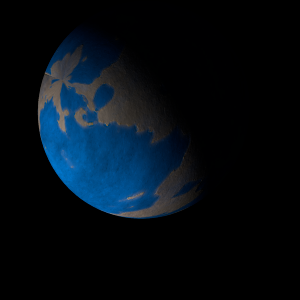|
|
Space Astro
|
Info for exoplanet "Joba"
| Scientific (actual) data |
|---|
| Name | Kepler-527 b |
| Planet status | Confirmed |
| Radius | 0.253 |
| Orbital period | 13.2854 |
| Discovered | 2016 |
| Updated | 2021-02-05 |
| Tconj | 2455000 |
| Publication | Announced on a website |
| Detection type | Primary Transit |
| Alternate names | 2MASS J19234989+4724226 b, K00333.01, KIC 10337258 b, KOI-333 b, KOI-333.01, WISE J192349.89+472422.6 b |
| Star name | Kepler-527 |
| Right ascension | 290.96° |
| Declination | 47.41° |
| Mag j | 12.424 |
| Mag h | 12.188 |
| Mag k | 12.125 |
| Star distance | 901 |
| Star metallicity | 0.03 |
| Star mass | 1.28 |
| Star radius | 1.45 |
| Star age | 2.4 |
| Star temperature | 6388 |
| Star alternate names | 2MASS J19234989+4724226, KIC 10337258, KOI-333, WISE J192349.89+472422.6 |
| Wikipedia article | Kepler-527 b |
Back
| |
| Fictional info (?) |
|---|
| Suggested name | Joba |
| Planet type | Cold planet |
| A prominent result is the "great brown spot", a giant storm that is known to have existed for centuries since it was first observed by radar. |
| Atmosphere | Ammonia | 99% |
| Ammonium hydrosulfide (NH4SH) | 0.00092% |
| Atmospheric pressure | 18 bar |
 |
| No known satellites |
| Google search for Joba |
|
Website by Joachim Michaelis
|
|
|
|